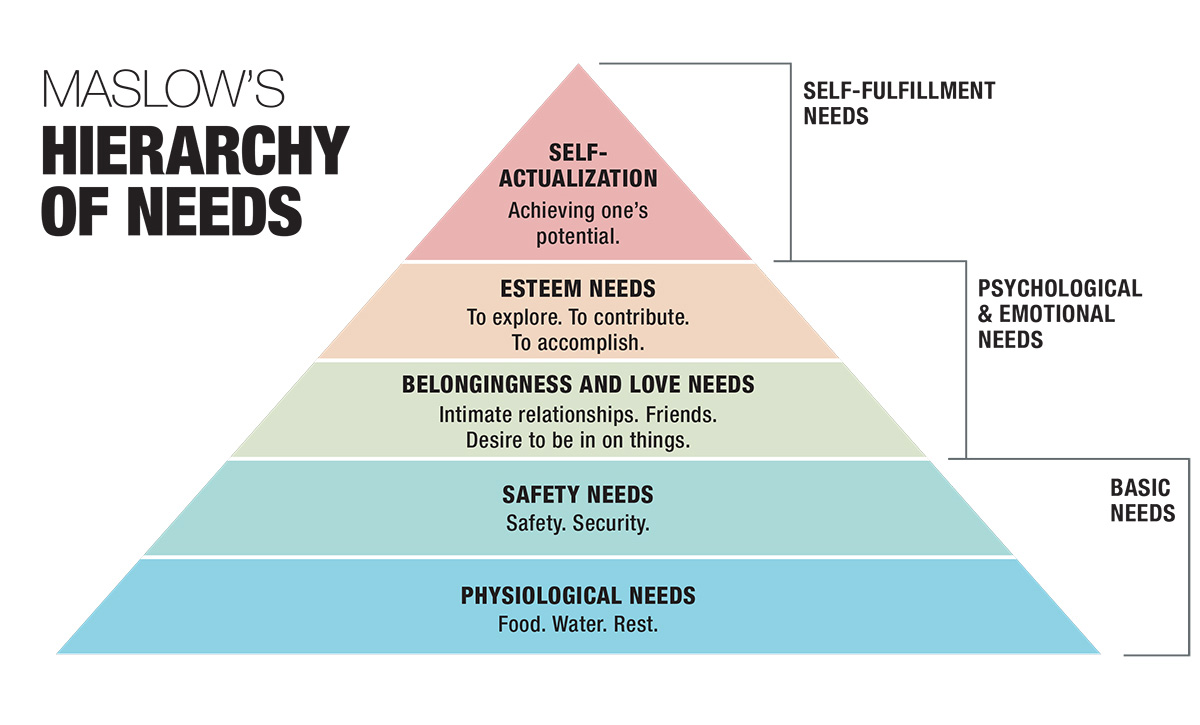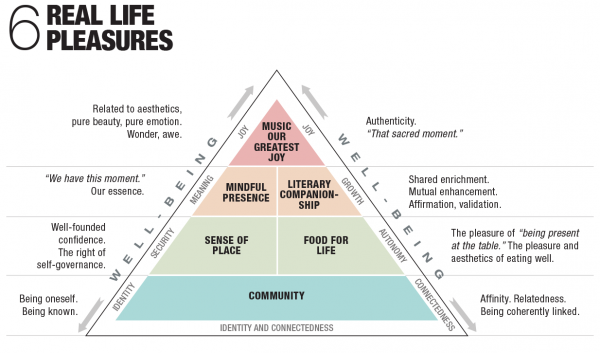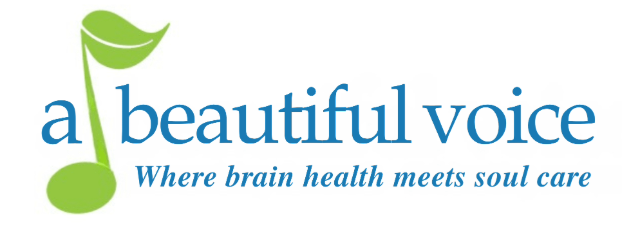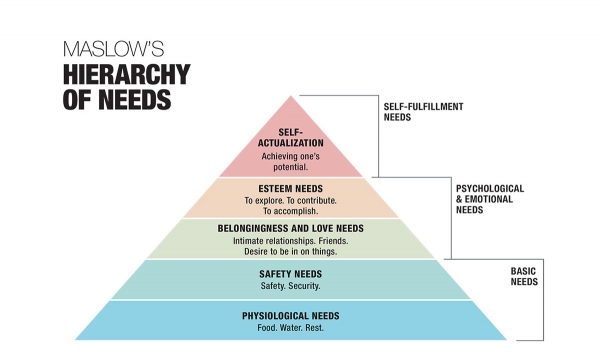Maslow, Power, and Enhancing Well-Being
A timeline
- 1943 – Abraham Maslow, a psychologist, proposed a hierarchy of needs in a paper, “A Theory of Human Motivation.”
- 1970’s – During my graduate studies, a psychology professor presented “Maslow’s Theory” – which frequently came to mind in a variety of situations over the years.
- Early 2000’s – It occurred to me that Maslow’s theory had a significant bearing upon the ranch milieu.
- 2004 – A group brought together by The Eden Alternative identified seven domains, now referred to as The Eden Alternative Domains of Well-BeingSM.
- 2010 (2nd edition, 2017) – Dementia pioneer and author, Al Power, MD, included Maslow’s theory in his first book, Dementia Beyond Drugs: Changing the Culture of Care. The theory, illustrated by Dr. Power’s rendering, is included in his discussion of finding meaning in life as a key to survival. This publication received the prestigious “Book of the Year” award by the American Journal of Nursing in 2010.
- 2014 (revised edition, 2017) – Dr. Power’s second book, Dementia Beyond Disease: Enhancing Well-Being, c. 2017, Health Professions Press, Inc., included a rendering of the Eden Alternative Domains of Well-BeingSM in his discussion.
- 2018 – ABeautifulVoice.org adapted Dr. Power’s well-being model to illustrate the hierarchy of “6 Real Life Pleasures” at the ranch. It represents what we set out to do – “to be the best we could be.”

Adapted from Maslow by ABeautifulVoice.org
Understanding Dr. Maslow’s Hierarchy of Needs:
In 1943, Abraham Maslow, a psychologist, proposed a hierarchy of needs in a paper, “A Theory of Human Motivation.”
The more basic needs are found on the lower levels of the pyramid and, in general, need to be fulfilled before each successive level above can be satisfied. It is important to note that exact sequencing does not apply to everyone.
The simplicity and orderliness of Dr. Maslow’s hierarchy are applicable to – and have been adapted for use – in many different situations and work settings.

Dementia Beyond Disease, Enhancing Well-Being – Revised Edition. (Well-being pyramid, p. 99. Definitions of domains, pp. 37-248). By Author G. Allen Power, MD, FACP (2017). Baltimore, MD: Health Professions Press, Inc. Copyright 2017. Adapted by ABeautifulVoice.org with permission of author.
Understanding Dr. Power’s Model for Well-Being in Dementia Care
Dr. Power’s model for enhancing well-being explores new, creative solutions in dementia care. He states: “I adapted the framework of The Eden Alternative Domains of Well-BeingSM. The domains were identified by a group of people brought together by The Eden Alternative in 2004.” In the adaptation of this framework, Dr. Power changed the order of the domains and created the pyramid and the in-depth application to dementia.
In his own words, Dr. Power describes his ordering of the domains – and the importance of beginning with relationships and deep knowing.
- “The ordering of the pyramid was not to suggest that well-being is unidirectional or that some domains are more important than others, but merely to suggest that in order to help enhance well-being for others, there is a logical order we should follow that begins with relationships and deep knowing. I felt the domains were better understood and taught in this order. Creating the pyramid then gave me many insights that reinforced my ordering.”
Highlighting the domains in the pyramid above, he continues…
- “Identity is not only about having a history, but a personhood that is recognized and supported by those around us. Connectedness includes both visible and invisible aspects. Security is not just physical safety, but also various aspects of emotional and psychological security. . . In addition, the broadening of security beyond only the physical aspects is dependent upon ‘relationship’ . . . Meaning and growth cannot occur without some degree of autonomy – self-determination and accepting reasonable risks.”
- “I often describe joy as existing both as a ‘small-j joy’ and ‘capital-J Joy.’ There is the joy of happiness and delight in the moment. . . but by optimizing the other domains, we can create a deeper Joy that gives a sense of contentment and resilience that sees people through the inevitable hard times and challenges we all face.”

Well-being pyramid illustrating hierarchy of “6 Real Life Pleasures.” Adapted by ABeautifulVoice.org from Dementia Beyond Disease, Enhancing Well-Being, Health Professions Press, Inc. – Revised Edition, (p. 99), by G. Allen Power, MD, FACP (2017).
Understanding the “6 Real Life Pleasures” at the Ranch
Finally – in 2018, I put pen to paper to sketch a pyramid of our “6 Real Life Pleasures” from ranch days. By this time, the “6 Real Life Pleasures” were about to become the daily features found on the Home Page of this e-magazine.
Long having had an appreciation for Maslow’s Hierarchy, I had reflected upon it in various situations prior to coming to the ranch. But, having arrived there, I was never able to fit our important need for “community” into his model.
Now, however – while reflecting upon the logical order of the domains in Dr. Power’s model, “community” found its place as the fundamental and important base of our adaptation.
Finally, “community” became the manifestation of the domains of identity and connectedness. It clicked into place to support the domains positioned above it.
Our adaptation was now complete. Visually, it represents what we had set out to do two decades earlier – “to be the best we could be.”

Click on Pyramids for Larger View
Domains of
Well-Beingsm
Well-Beingsm
From Dementia Beyond Disease, Enhancing Well-Being – Revised Edition. (Well-being pyramid, p. 99. Definitions of domains, pp. 37-248). By Author G. Allen Power, MD, FACP (2017). Baltimore, MD: Health Professions Press, Inc. Copyright 2017. Adapted with permission of author.
6 Real Life
Pleasures
Pleasures
Well-being pyramid illustrating hierarchy of “6 Real Life Pleasures.” Adapted by ABeautifulVoice.org. Adapted from Dementia Beyond Disease, Enhancing Well-Being – Revised Edition, (p. 99), by G. Allen Power, MD, FACP (2017).


